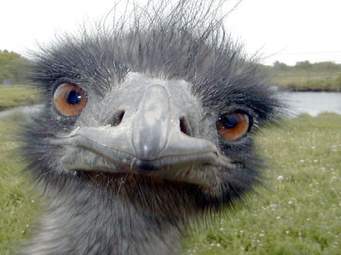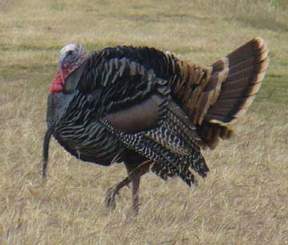
23 Nov Poets’ Corner: Feela On Birds & Thanksgiving
“What we’re really talking about is a wonderful day set aside on the fourth Thursday of November when no one diets. I mean, why else would they call it Thanksgiving?“ Erma Bombeck

In a letter to his daughter, Ben Franklin proposed the turkey for the official bird of the United States. But Charles Dickens could be one reason the turkey is the mainstay of the Thanksgiving table. Published in 1843, “A Christmas Carol,” with its classic menu of turkey with gravy, stuffing and plum pudding, convinced many Americans, avid fans of the author, to feature the bird earlier in the holiday season. Or perhaps it is all due to Sarah Josepha Hale, the influential editor of the magazine “Godey’s Lady’s Book.” In her 1827 novel “Northwood,” Hale described the Thanksgiving feast. She began with turkey set in a “lordly station,” flanked with sirloin of beef, ducks, geese and and a leg of pork. (Hale also added an array of veggies to her table and a chicken pie.)
Dickens or Hale, turkeys were a righteous choice: birds born in the spring would spend about seven months eating insects and worms on the farm, growing to about 10 pounds by Thanksgiving. They were cheaper than geese, which were also more difficult to raise, and cheaper by the pound than chickens. And cost was a factor because cooks were not only preparing one meal. Thanksgiving was the time to bake meat and other pies that could last the winter. Today, 46 million turkeys are gobbled up each Thanksgiving (22 million at Christmas) and last year alone, the average American consumed 16 pounds of the big bird.
But all this happy turkey talk puts Telluride Inside… and Out contributor David Feela to sleep. (And that has nothing to do with tryptophan.) David favors “Birds With Few Feathers.” And this particular and particularly hilarious case, he is not talking turkey. At least not just….
Read on for details….
AND HAPPY THANKSGIVING. (Try not to throttle your mother-in-law.)

Birds with few feathers
by David Feela
Long-necked llamas have made a home in the West for some time now. You’d recognize a llama at first glance, I know you would. Ogden Nash, decades ago, penned a little poem to help anyone who couldn’t distinguish between the beast and the lama that’s a priest. I won’t repeat it for you here because I don’t want to be sued out of my silk pajamas. Still, I mention the llama. because it’s time for a new rhyme celebrating a creature from Australia that hasn’t had much luck making a home with ranchers in the West. I’m speaking of the emu. So here it is, my contribution to the annals of animal verse:
You’d think an emu is a bird
But like an ostrich, it’s absurd.
And if an emu learned to fly
You’d duck fast as the other guy.
Truthfully, I’d never thought of joining a bird rodeo until the evening before Thanksgiving, while my wife and I were walking along the irrigation canal that stretches just east of our house. Normally we see a few rabbits, birds, skunks, an occasional deer and quite a few healthy snakes. The landfill is only a half-mile from our house and the wildlife around us is not that wild. We get a lot of scavengers looking for municipal handouts. If we had to survive by hunting, we’d eat a lot of crow. This emu, though, was a bird of a different feather.
A neighbor drove up in his truck and pulled over, rolled down his window, pointed and told us he’d tried to approach the bird when he first noticed it in his yard, but it began stomping its two enormous prehensile feet in a very hostile manner. Touring the neighborhood in his truck, he asked area residents without any luck if anyone knew where an emu might roost. No one knew what to make of an emu. One local swore that a disgruntled emu rancher had loosed the last six of his herd (if you can call more than one bird a herd) into the hills to fend for themselves. He knew what to make of an emu: Shoot it and roast it. With this comment served up as the collective wisdom of our neighborhood, the bird’s future was looking dim as the sun faded, this evening before Thanksgiving. I volunteered to call the authorities.
It was after five o’clock. I spoke with answering machines for the Humane Society and the Animal Control office. Funny, the way answering machines don’t really have any answers. I got two busy signals before finally getting through to the police department’s non-emergency operator. I was transferred to a dispatcher who listened to my story, but said no police officer would be able to apprehend an emu. Though I hadn’t witnessed our jailbird’s attempt at flight, I knew the dispatcher was right. She, in turn, assured me that I shouldn’t worry, that the animal would find its way home eventually, because people out in my neighborhood only shoot stray dogs.
I got to worrying anyway, wondering about emus, thinking I should know something about what they eat, how they shelter, how they defend themselves in a hostile world. I couldn’t take the bird home. I didn’t even know if it was a female or an emale. It was going to be a cold night and I half-suspected I’d have to thaw the bird by morning if it chose to stay in the grass beside the canal. I went home to do a little research.
An emu (pronounced “ee-mew”) turns out to be a sole surviving species from Australia. It is the largest of flightless birds, next to the ostrich. An emu can attain the height of six feet and weight 130 pounds. I knew if we could train them to play basketball, the public would appreciate emus more. I was also beginning to understand why ranchers were interested in emu. Their meat is low in cholesterol, high in protein, and even tastes great! So why aren’t people flocking to the supermarket for a few pounds of ground emu?
The bird, as a visual experience, is a tragedy. Though it can move gracefully at speeds very frustrating to its potential predators, it stands in a field like a ballerina in cowboy boots. It’s difficult to imagine how birds in general are the closest genetic link we have with extinct dinosaurs, but it’s impossible for an emu to deny its ancestry. Strangely, the bird is described as being peaceful and timid, interested in grazing on fruits, seeds, and flowers. I called a woman nearby who used to raise emus to apprise her of the emu situation near my house. She said her family butchered their remaining stock and had no plans to hatch a new enterprise. Emus, according to this ex-emu rancher, have nasty dispositions and their marketable worth has plummeted to practically nothing.
Thanksgiving morning while I struggled to get into my own dressing, my wife was in the kitchen stuffing the turkey. She suggested as I headed out the door, “Take a pail of that field corn I keep in the garage.”
When I arrived at the spot where I’d last seen the emu, it looked as docile as an undetonated hand grenade. I approached and tossed a handful of corn in front of me. The emu stepped back. When I looked up, I saw a man walking across the field, swinging a lariat. Here was someone I hoped knew a little more about an emu than me.
The man spoke with a thick Spanish dialect, a transplant into the English-speaking world, and he explained how this emu was practically a pet that he kept in a field with his sheep, but two days ago it escaped. He spied the corn and said his emu loved corn, but that he’d run out, had to feed it oats, which the emu didn’t appreciate. I tossed down a little more corn and the emu cautiously approached, then it gave in to an old pleasure: Eating cuisine.
Every time my little neighbor tossed his lasso, the emu skillfully evaded the noose and sped off along the fence line. After nearly a dozen attempts, my five-foot two-inch neighbor managed to toss a loop over the bird’s head and we pulled the bird to the ground, the emu kicking, floundering, struggling with its powerful legs and useless wings to get loose. Suddenly I was glad I didn’t own an emu. Though this was the first emu rodeo I’d competed in, I knew right off why people would not eat this bird. I was also confident they wouldn’t try to put a saddle on it.
We finally managed to get my neighbor’s hat pulled over the emu’s head and it calmed the bird enough so we could wrap the rope around its legs and roll its body through an opening in the barbed wire fence. Only then did we dare let the emu stand upright again. We didn’t stand there for long. Suddenly the emu dragged my partner off toward his home while he glanced back over his shoulder, smiling and waving. I watched the two of them disappear in this awkward dance across the field, each taking turns at yanking the other, as if the cosmos had become a giant yo-yo where it was impossible to tell who controlled the string.


ART GOODTIMES
Posted at 04:55h, 06 Decemberanother great story by regional wordmeister david feela